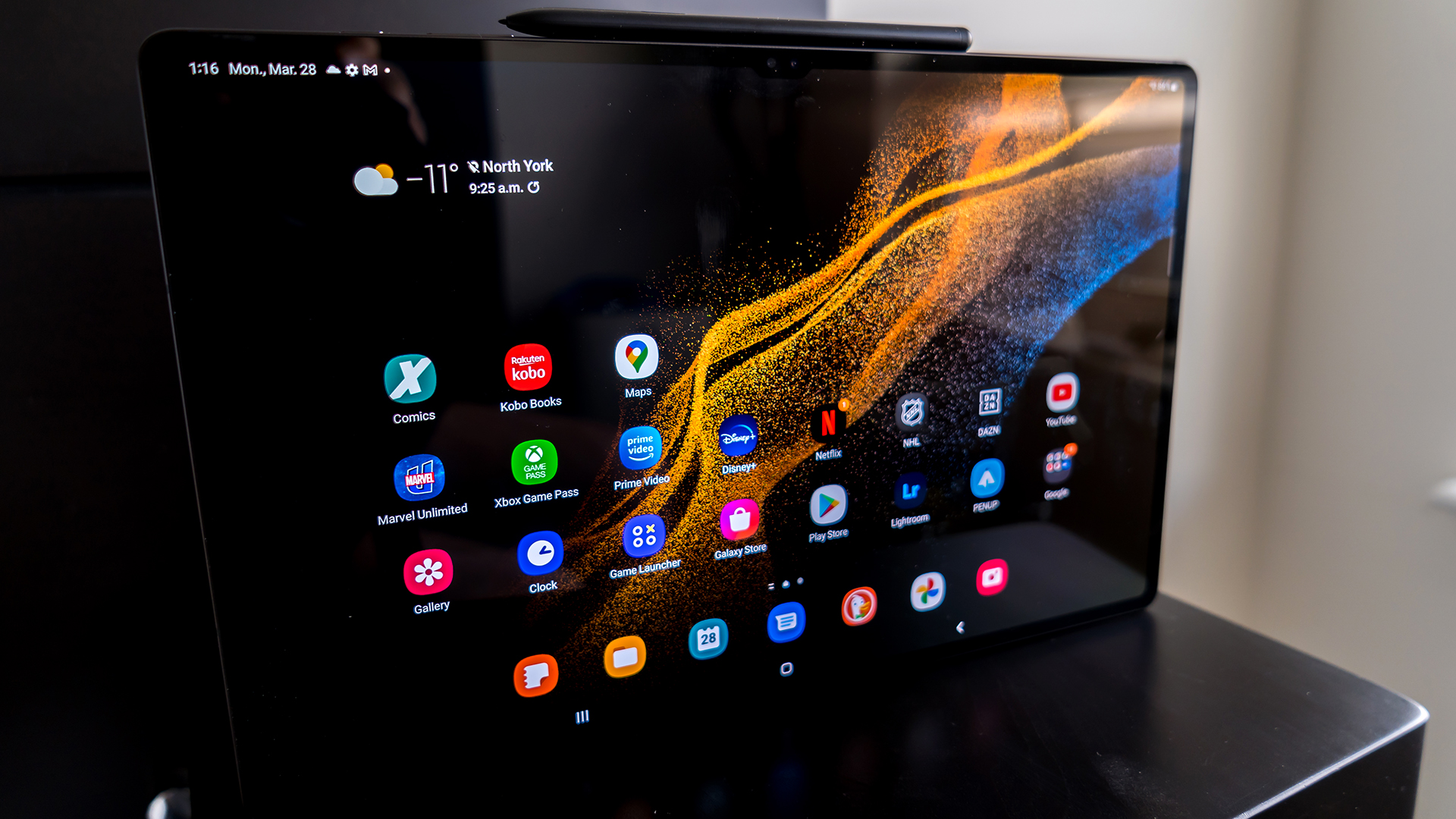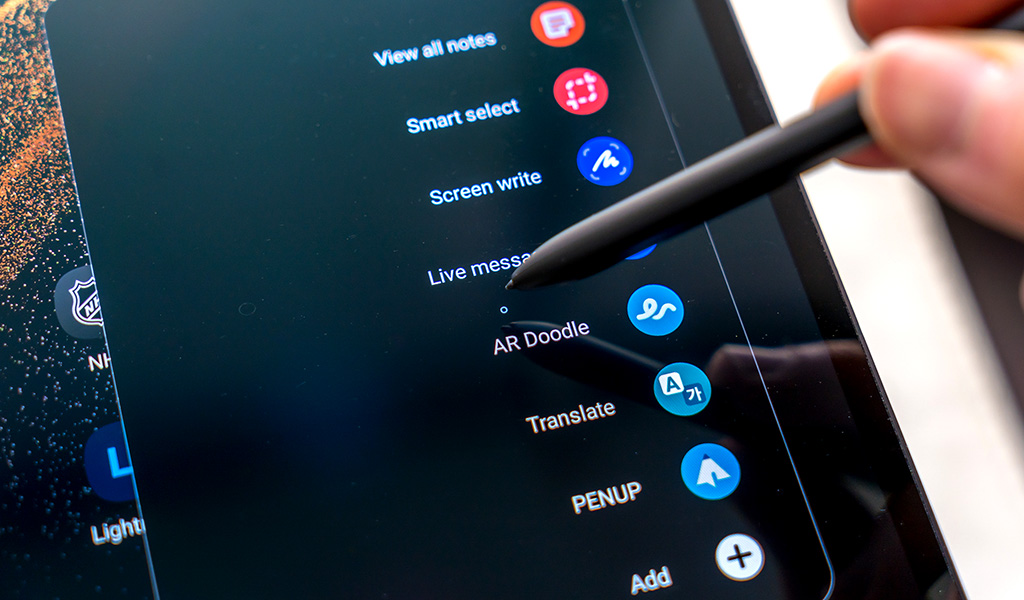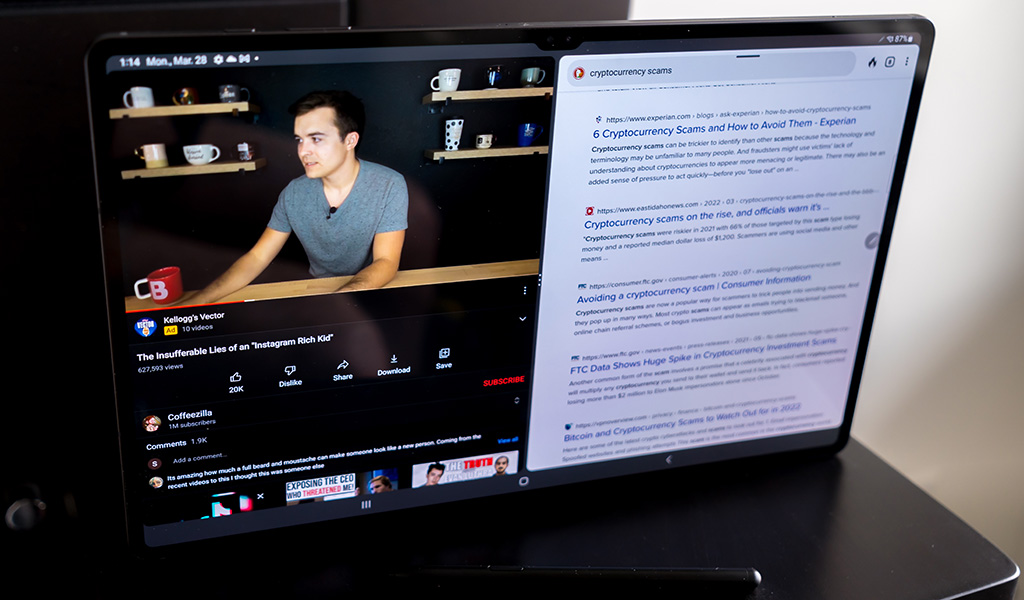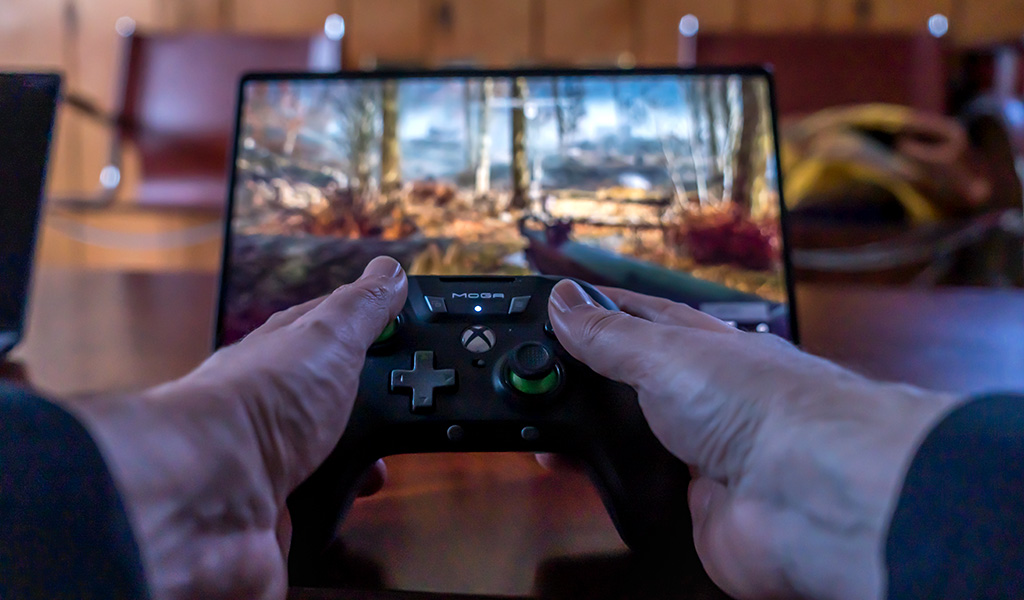
If you want a really big Android tablet, they don’t get bigger than the Samsung Galaxy Tab S8 Ultra, and the size really does matter. Previously, Samsung would launch two versions of the same tablet, only this time there are three. The Tab S8 Ultra is the outlier, mainly because of its very size, but also for the consequences that go with that.
Samsung sees this device as more than just a one-trick pony. You can certainly consume all the content you want on it, but you’re supposed to also get work done with it, too. That’s been the mantra for years, so nothing new there. Except this time around, the canvas you get to work with is larger than some laptops out there.
Samsung Galaxy Tab S8 Ultra
|
Looking at the Galaxy Tab S8 Ultra
With each year, Samsung keeps expanding the size of its flagship tablet, and that’s easy to see with this one. The Galaxy Tab S8 sports a huge 14.6-inch Super AMOLED. It’s a gorgeous display, and one of the best you will find on any tablet on the market today. As a visual canvas, it’s ideal for the simple fact you have so much real estate to work with. If you’ve ever used a laptop with a touchscreen this big, you will know how this feels.
It’s also powerful by virtue of the components inside. The processing power, coupled with the memory and screen technology, combine for a smooth performative experience. The Snapdragon 8 Gen 1 chip will get a lot of attention (from those paying attention) this year as the premium chipset for Android devices. It runs well on this device and sets the stage for everything you can do on it.
Despite its size, it feels very thin and lightweight—the kind of tablet that would be easy to take with you. Thinner bezels are great to expand the screen size without making the tablet itself bigger, though I found I had to be a little careful how I grabbed it because I would sometimes accidentally tap on something else. It happened with YouTube several times.
A lot of the same trappings apply from previous models. The USB-C port, AKG-tuned speakers, Dolby Atmos support and magnetic connectors for folio cases and keyboards. That latter part is important because it speaks to Samsung’s DeX mode, a way to treat this like a laptop. With a better front-facing camera, including an ultra-wide, video calls are a whole lot easier, too.

Where the S Pen fits in
The S Pen is now a staple of Samsung’s tablets, and the key change this time around is how much more precise it is. Put the pen to the screen and the latency is indeed shorter than it used to be. Not quite pen to paper, but very close. I loved working with it when editing photos, though wish I had a more robust version of Photoshop to do so.
Instead, I had to use the Android version, which is barebones by comparison. I had better luck with Lightroom, which I often use with Android tablets, as it is. If you’re into sketching, drawing, graphics or animation, I can see the pen’s advantage. If you like to take notes for whatever reason, there’s plenty of room to do that here. Unlike last year, Samsung doesn’t include Canva, Clip Studio and Noteshelf into the preloaded apps.
Apart from that, all the other S Pen features apply here. Tap the pen icon on the side, or click the pen’s button to bring up the menu. Create notes, create GIFs, create memes, write on screenshots, among other things. If you’re newer to the pen, it’s a good idea to explore this menu of options and see what you can do.
In case it matters, this S Pen is also compatible with the Galaxy S22 Ultra. I even saw it work with the Galaxy S21 Ultra. Like the more recent S Pens, this one does have a battery inside, and the strip on the back of the device acts as both a holder and charger for it.

Performance of the Galaxy Tab S8 Ultra
Unfortunately, I didn’t have the keyboard to test out the Galaxy Tab S8 Ultra as a laptop equivalent. Samsung continues to push the idea that it has a tablet capable of replacing one, much like Apple is trying to do with the iPad Pro. I don’t know that I’m really convinced at this point, and that’s partly because the experience isn’t always optimal.
DeX works fine on this tablet, but it’s not just about that. Android works fine, too, but not all apps were necessarily optimized for a screen this size. That’s why some will look better than others. One way to make use of the screen real estate is to split apps in two. Putting them side-by-side at least allows you to multitask in ways that wouldn’t be as easy on tablets with smaller displays.
There’s also Samsung’s Second Screen app that ties in to Windows PCs. Easy to set up, the Tab S8 Ultra acts as a second display to your PC, making it part of your productivity suite. I would love to see this work on a Mac, but sadly, we’re not there yet.
Without the keyboard, it was hard for me to use the Tab S8 Ultra as a word processor, or to work on anything that required a fair amount of typing. From a creative standpoint, it was also beholden to the apps available on the Google Play Store. For instance, if I was to try editing a video or record an audio file, it wasn’t as straightforward as doing it on a laptop. As is, you would have to find what kind of workflows are best for you with this tablet.

Other ways to use the Galaxy Tab S8 Ultra
I actually found the device to be a real pleasure for varying content. It was awesome as a screen to play games on Xbox Game Pass. I read comics on it using Comixology and Marvel Unlimited, where the larger display really brought the images and text to life. Reading ebooks was good for that, too, especially if you prefer making text bigger.
Generally speaking, consuming content on this thing is a pleasure. The bigger screen is great for movies, shows, sports and any other visual medium. Just for the video games and comics alone, it felt like such a difference over smaller tablets, even if 10-inches isn’t small in the grander scheme.
I’m easily not covering all the other use cases, but that’s part of the appeal here. It is what you make of it. The only thing is whether or not you need something this big. Samsung released the Galaxy Tab S8+ and Tab S8 as alternatives, and you can do a lot of the same things on those, too.
Galaxy Tab S8 Ultra battery life
One pitfall in going with a screen this big is the battery can only hold up for so long. Samsung doesn’t commit to an exact number, but with moderate brightness, you should be able to hit 10 hours per charge. That’s not bad for tablet of this size, though you will likely plug in often to keep video binging when the mood strikes.
Samsung won’t give you a wall charger to go with the device, so you would need to get one yourself. If you do, try to get a USB-C one that does 65W, so that the Galaxy Tab S8 Ultra at least charges faster.
Final thoughts on the Galaxy Tab S8 Ultra
Not only is this one of the biggest tablets you will ever find, it’s also one of the most expensive. That’s why I can only recommend it if you expect it will serve the dual purpose of consuming and producing content. If it’s purely to enjoy watching content, that’s fine, so long as you’re cool with the relative cost. If you do plan to use it to create content, you have to look at what a case or keyboard would add to that.
The S Pen plays a role in making this device what it is. I would even say it’s very likely that you will find a use for it once you start playing with it. Thing is, you could also get a similar experience with the Galaxy Tab S7+, which could feel like a bargain by comparison.
The Samsung Galaxy Tab S8 Ultra is available now in graphite.



